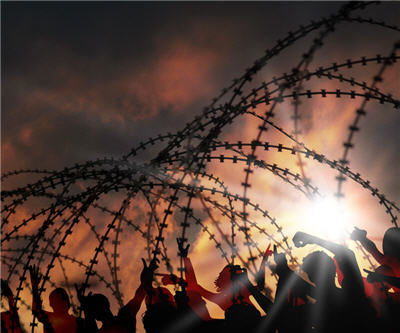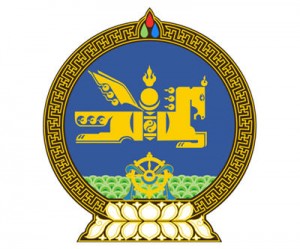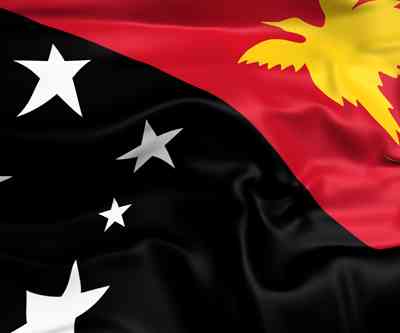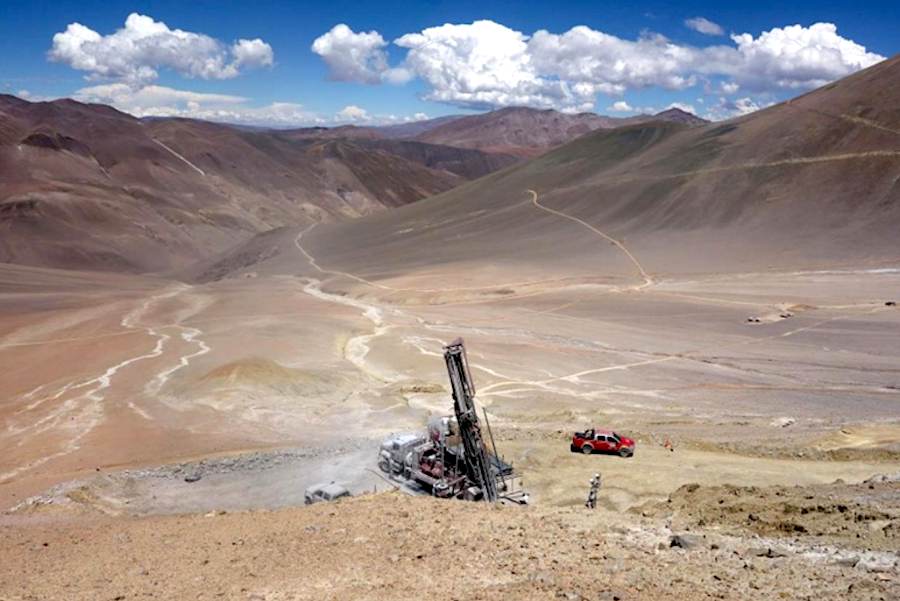How whetted is your risk appetite? Gold diggers explore the final frontiers

The Eurasia Group writes in a guest post on the FT that as attractive deposits become harder and harder to find in traditional markets miners are pushing the limits of the political risk they are willing to take on.
Eurasia argues in the FT’s Beyondbrics section “above-ground risks are quickly gaining equal footing to traditional geological and engineering considerations for mining projects,” something that is especially true for gold:
From 2001 to 2010, global mined gold production grew from 2,646 tonnes to just 2,696 tonnes. While this meagre pace partly reflects the side effects of underinvestment in exploration during the low gold-price cycle of the 1990s, it also reflects the longer lead times associated with the frontier markets that are now essential to growing global supply. In fact, three of the world’s ten largest gold mines are located in frontier markets: Uzbekistan (Muruntau, owned the government), PNG (Lihir, owned by Newcrest Mining), and Mongolia (Oyu Tolgoi).
Research house Maplecroft in its 2012 political risk atlas released yesterday identifies DR Congo, South Sudan, Myanmar, Turkmenistan, Iran, Guinea, Zimbabwe, Venezuela, Iraq, Bolivia, Russia, Kazakhstan, Angola, Nigeria and Libya as resource nationalism hotspots.
Missing from the Maplecroft list is Papua New Guinea which this year heads into elections that many observers have warned is bound to lead to civil unrest. In August last year the country’s new leaders introduced a plan to hand state ownership of mineral and energy resources to landowners, a move that may prove disastrous to foreign miners developing massive projects and pushing into new regions of the resource-rich country. Although it has since soft-pedalled the issue it is bound to come up again in the country that relies on mining for 80% of its export earnings.
Research firm Metals Economics Group reported in November gold continues to be top exploration target, accounting for more than 50% of global exploration of non-ferrous metals for the second consecutive year in 2011. Latin America continued to be the industry’s favourite regional exploration destination in 2011, and overall budgets shot up by 50% or $6.1 billion:
Most countries are seeing increased exploration investment in 2011, and explorers are demonstrating a higher tolerance for risk despite additional concerns and uncertainty about security, policy, and tenure in many countries. Of the 120 countries for which we documented exploration spending by the industry, those commonly perceived to be high risk account for 23% of the 2011 aggregate exploration total, up from less than 16% in 2010.
Last year according to an Ernst & Young survey of the world’s 30 largest miners, resource nationalism jumped to the top of the risk list in 2011 from fourth in 2010, after 25 countries announced their intentions to increase their take of the mining industry’s profits and others contemplate outright nationalization.
Things can go spectacularly wrong in these frontier markets:
This week Canada’s Kinross Gold’s shares were beaten down 20% after announcing a material charge relating to the $4.6 billion goodwill it recorded for the Tasiast mine in Mauritania it bought in September 2010 for $7.1 billion. The company also said it needs an additional 6 to 9 months for the feasibility study and mine plan, and warned of cost escalations of some 25%.
At the start of the year following a dispute with the DRC government over expropriation of one of its key assets, First Quantum Minerals sold out completely from the central African country. The Vancouver-based copper miner sold its Kolwezi tailings project along with the Frontier and Lonshi mines and related exploration interests for $1.25 billion, about half the value some analysts put on the projects before the DRC government stepped in.
 In October, Ivanhoe Mines and Rio Tinto dodged a bullet when the Mongolian government said it was rethinking a 2009 deal that gave the miners a 66% stake in Oyu Tolgoi and that it wanted half of the $6 billion gold and copper project. Ivanhoe shares plunged on the news, but the firm took a tough stance and after some desperate negotiations Mongolia backed off. Oyu Tolgoi is now 70% built and Rio is poised to take full control of the project.
In October, Ivanhoe Mines and Rio Tinto dodged a bullet when the Mongolian government said it was rethinking a 2009 deal that gave the miners a 66% stake in Oyu Tolgoi and that it wanted half of the $6 billion gold and copper project. Ivanhoe shares plunged on the news, but the firm took a tough stance and after some desperate negotiations Mongolia backed off. Oyu Tolgoi is now 70% built and Rio is poised to take full control of the project.
Considered to fall into the emerging economy category rather than being a frontier market, Newmont’s experience in Peru is nevertheless a stark warning to the extractive industries. In December the Peruvian government was forced to declare a state of emergency after boulders were used to block exits from the Cajamarca regional capital of more than 200,000 inhabitants, schools, hospitals and business were closed and dozens injured in clashes with police over Newmont’s Conga gold project. Work on the $4.8 billion mine remains indefinitely suspended.
Freeport-McMoran’s experience at its Grasberg gold mine in neighbouring West Papua, a poor province of Indonesia, is well documented.
Eurasia Group says when mining projects such as Oyu Tolgoi, Conga and Tasiast, which has tremendous impact on economic activity in their host countries, gains ‘VIP status’ in the eyes of the government it can also create additional risk as “taxes, royalties, and local purchasing become a driver for political conflict:”
Weak rule of law will exacerbate such risks, as will a propensity on the part of host governments to partner with Chinese and other state capitalist partners under opaque terms (as evidenced by China’s $6bn infrastructure loan to the DRC for mining assets).
{{ commodity.name }}
{{ post.title }}
{{ post.date }}


3 Comments
Dan Oancea
Prudent folks should not invest in small companies that have flagship projects in these ‘black hole’ countries – put Pakistan down as well. I’m talking small companies that try to develop the deposit on their own – e.g. Crystallex & the gang.
Plenty of gold in other safe jurisdictions (e.g. N. Am. – Nevada, Canada). Anyway the larger (and more diversified) the company the better suited to explore, own and eventually develop mineral deposits on quick sands. Even if they loose the project at least they won’t go belly up because of that.
Juniors, they look at the commodity cycle/prices, how long it would take to discover something valuable & calculate mineral resources and they move accordingly. 2-3 yrs later they’d try to sell it to a larger company that is being able to better deal with that specific difficult business environment – the buyer might also be a private local company headed by a well connected country fellow. This ‘hit (get lucky) & run (sell)’ strategy could also be good business for some savvy investors that understand what happens and hit the sell button at an appropriate time.
RY
Well written- especialy your hit and miss bit which is sadly true – what happened the entrepreneurs in this world i ask) but all of it hardly news to anyone reading mining digest Dan, It is also very hard from Investors to invest in small companies as you speak of ‘worldwide’. I would be quite a large investor- i wont use the word professional investor as these days its about as hilarious as hearing someone described as a professional poker player..
Anyway im quite a large and well read investor and i find it hard to invest all around the world in small companies, finding a way to do it is one thing and they the trading costs are another, for instance i mainly invest here in Europe, have a large portion on the ASX still as spent a few years working in mines in oz and last year opened ZECCO in the states, to keep track of them all fund them all etc was a nitemare, so much so that my USA stocks well two diluted me out of the picture, the third might just get lucky and get me my investment back in a year or two if im lucky
Gold is a Cycle just like anything else in this world. sure it has a certain value contained in itself, but what is value- stuff is only worth what someone is prepared pay for it, sometimes you can hardly give it away some times everyone wants it, so beware the cycle folks, Gold was a great investment – at 500 Dollars, those of you that “knew along it was going to take off” well tip well done for not getting in but your too late now so please stop talking it up.
its like this the only way stocks can get lower is if most of the bluechips just got out of business, likely ? i think not, so basically greece debt woes, volcanoes etc, the stocks will get there run again soon so i wouldnt hold out for gold to double and go to 5 k.
and to re-iterate what Dan said above holding for it to go to 5 k whilst playing on Gold junior is an even more dangerous game, price needs to be up for their ‘undetermined reserves’ to look even viable. some of them have a great website and not enough capital to put diesel in the drill machine ..
So as some american buck once said..
A Gold mine is a hole in the ground with a lier standing on top
Happy trading in 2012
R Y
Louk Jongen
What is the difference between a nationalization by DRC, or a windfall/CO2 tax superimposed by a ‘developed’ nation like Australia, or an environmental endless moratorium as often seen in the US?
Minining means risks, but I have to spend more time in evaluating the unreliable governments including the western cronies, than the geological merits.